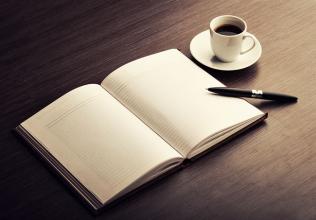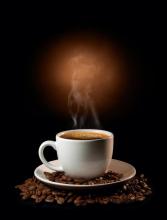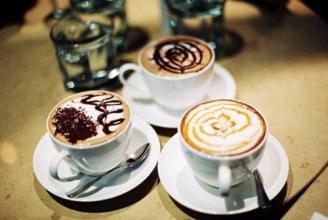Coffee extraction factors Flavor description Taste variety characteristics Grinding scale treatment method Introduction
Flavor description of Coffee extraction factors introduction to the method of Grinding and Calibration for the characteristics of Coffee varieties
Coffee beans, including raw bean origin, roasting degree and freshness. The origin determines the height of the coffee, which is shown by good roasting, and the freshness determines whether you retain all the flavors you could have. Therefore, a cup of coffee beans with excellent flavor must be inseparable from these three factors.
The amount of powder, the amount of powder actually not only affects the final amount of extraction, if you simply think that 10g powder extract 160g coffee, 20g powder extract 320g coffee, that is a big mistake. The amount of powder not only affects the extraction amount, but also affects the steaming efficiency, water temperature, extraction flow, extraction speed and so on, and finally affects the extraction rate. According to the author's extraction experience, in general, the more the amount of powder, the easier it is to underextract.
Grind degree, coffee roasting cell structure changes, there are many cavities, filled with gas, including many aroma components. The degree of grinding actually determines the degree of difficulty of extraction. The finer the degree of grinding, the easier it is to extract the taste of coffee. Then we should determine the rough grinding degree according to the roasting degree and freshness of coffee, and then adjust it according to the extraction results in order to achieve the balance of extraction.
Cloth powder, this is a very easy to overlook, because hand-made cloth powder is not as important as Italian cloth powder, but it is also a key factor to determine the consistency of extraction. First of all, the flatness of the powder surface determines the uniformity of steaming and extraction; secondly, some people like to pat the filter cup to increase the density of the cloth powder, which will affect the extraction flow and extraction speed. A good habit of distributing powder will reduce the error of each extraction result of the barista.
At a fixed amount of water, the longer (shorter) the soaking time, the higher (lower) the extraction rate and the higher (lower) the concentration. The baking degree should be taken as the main consideration for the length of soaking time. Shallow baked beans are not easy to extract, so the brewing time should be a little longer than baking. On the contrary, re-baked beans are easier to extract, so the brewing time is slightly shorter than that of shallow baking. In other words, the baking degree should be opposite to the boiling time.
During a visit to Italy, you will find that the extraction time, water temperature, and milliliters per cup of re-roasted coffee in South Italy are obviously less than those slightly lighter in the north, which is the practice of this technique.
The stirring flow should be inversely proportional to the baking degree.
Many people ignore that the strength of the current can also affect the extraction rate of coffee, which in turn affects the concentration. Water flow refers to the force of hot water passing through or impacting coffee granules. The stronger the stirring water is, the more it can promote the extraction of coffee ingredients. If there is no water flow to promote the extraction of follicular coffee, the coffee particles are tangled together, which is easy to cause uneven extraction, resulting in an extraction rate of less than 18% of the lower limit, and the coffee flavor is too weak. However, if the current is too strong or lasts too long, the friction of the particles is too large, which can easily lead to excessive extraction, resulting in an extraction rate exceeding 22% of the upper limit, and the high astringent bitter bite is easy to dissolve.
The strength of stirring water also needs a baking degree as an index, and deep-baked beans should be boiled with gentle water so as not to over-stretch the extraction rate. But boiled shallow baked beans can be stirred with a slightly stronger water flow to avoid too much essence remaining in the coffee grounds and cannot be extracted.
Electric trickling filter pot (nozzle water column size), hand punch kettle (nozzle caliber and water column height), siphon kettle (stirring force), French filter kettle (stirring and lower pressure channel), table smart filter cup (stirring force) are all used with water flow and stirring force to accelerate extraction. The size of the water flow, too much, in principle, the extraction of shallow baked water flow should be larger than deep baked beans. Water flow, water temperature, time and thickness are all sharp tools for baristas to control the intensity and taste spectrum.

Important Notice :
前街咖啡 FrontStreet Coffee has moved to new addredd:
FrontStreet Coffee Address: 315,Donghua East Road,GuangZhou
Tel:020 38364473
- Prev

Description of Brazilian Coffee Flavor introduction to the Grinding scale of the treatment method in the Manor area
Brazilian coffee flavor description taste manor regional treatment grinding scale introduction Brazilian coffee was introduced from French Guiana in 1729. It is true that intensive farming, changing treatment methods and improving the technical content of planting can improve the quality of coffee to a certain extent, but the natural conditions of Brazil cannot be compared with those of some regions that produce top coffee in the world, because although
- Next

Introduction of South Africa Coffee Bean production process processing Manor Cooperative production area
South African coffee beans introduce the coffee producing areas of South Africa: coffee production in South Africa (SouthAfrica) is mainly concentrated in the northeast of the country, from Natal between Lesotho and Mozambique, extending northward to Transvaal, with a southernmost limit of 30 degrees south latitude; further south, coffee cannot be grown due to the harm of early frost. What's interesting is that
Related
- What brand of black coffee is the most authentic and delicious? what are the characteristics of the flavor of the authentic Rose Summer Black Coffee?
- Introduction to the principle and characteristics of the correct use of mocha pot A detailed course of mocha pot brewing coffee is described in five steps.
- Which is better, decaf or regular coffee? how is decaf made?
- How much is a bag of four cat coffee?
- How about four Cat Coffee or Nestle Coffee? why is it a cheap scam?
- Which is better, Yunnan four Cats Coffee or Nestle Coffee? How about cat coffee? is it a fake scam? why is it so cheap?
- How about Cat Coffee? what grade is a hoax? which instant coffee tastes better, four Cat Coffee, Nestle Coffee or G7 coffee?
- Process flow chart of coffee making-Starbucks coffee making process what coffee tastes good at Starbucks
- The top ten best coffee beans in the world Rose summer coffee or Tanzanian coffee tastes good
- Yunnan four cat coffee is good to drink?_four cat coffee is a big brand? four cat blue mountain coffee is fake?

